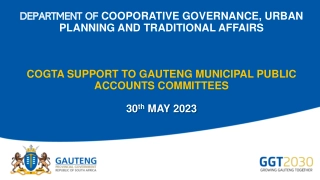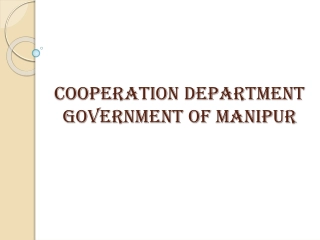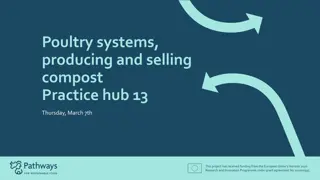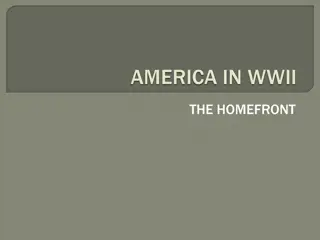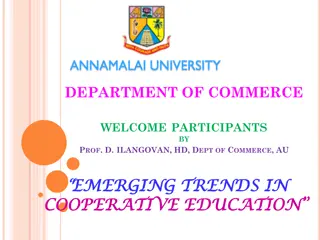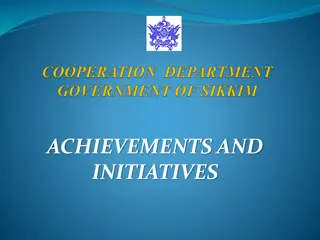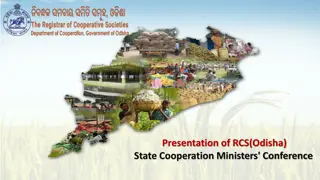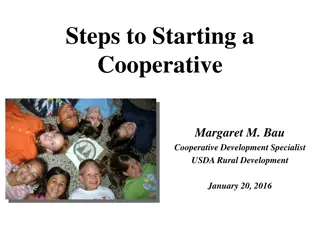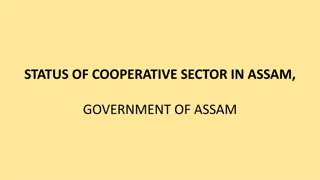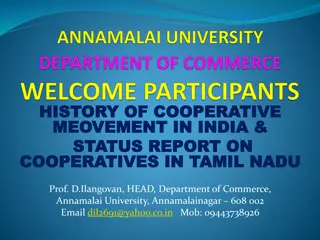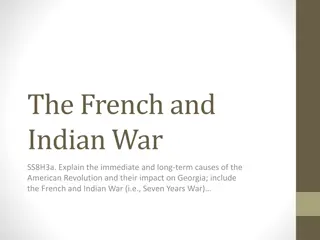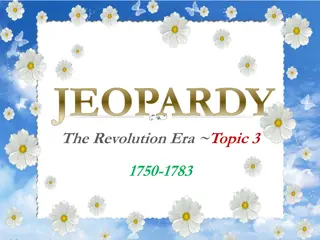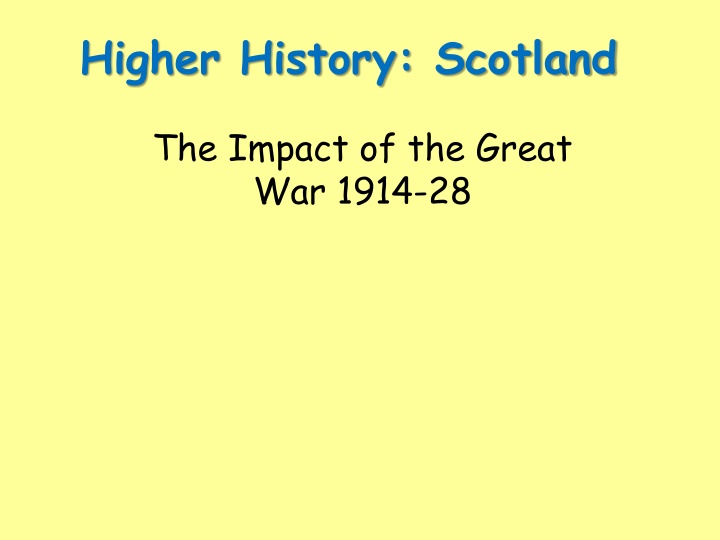
Impact of Great War on Scotland: Higher History Overview
Explore the significant impact of the Great War on Scotland from 1914 to 1928 through the Higher History course, focusing on areas such as Scottish society, industry, politics, and the experience of Scots on the Western Front. Engage with detailed source handling questions and delve into Scotland's pre-war landscape, economy, politics, and martial traditions. Dive into the study of Scotland's conditions before the war and the transformative effects of the war on various aspects of Scottish life.
Download Presentation

Please find below an Image/Link to download the presentation.
The content on the website is provided AS IS for your information and personal use only. It may not be sold, licensed, or shared on other websites without obtaining consent from the author. If you encounter any issues during the download, it is possible that the publisher has removed the file from their server.
You are allowed to download the files provided on this website for personal or commercial use, subject to the condition that they are used lawfully. All files are the property of their respective owners.
The content on the website is provided AS IS for your information and personal use only. It may not be sold, licensed, or shared on other websites without obtaining consent from the author.
E N D
Presentation Transcript
Higher History: Scotland The Impact of the Great War 1914-28
The Structure of the Scottish course The exam Worth 1/3 of exam You will be given three source handling questions worth 20 marks in total Evaluate the Usefulness (6), Comparison (5), How Fully (9) Roughly 45 minutes (of 2hr 20 exam) Four Units 1. Scots on the Western Front 2. Effect of the war on Scottish Society 3. Effect of the war on industry 4. Effect of the war on Scottish Politics
Part 1: Scots on the Western Front Checklist: o Scotland before the war o Recruitment o Experience of War o Battles of Loos and Somme o The Kilted Regiments o Scots personnel leaders o Scots personnel - overall contribution
We are learning to Describe Scotland on the eve of WWI I can Summarise the Scottish people, politics, economy and martial traditions
Scotland before the war Everybody divide a double page into four sections with the following headings 1. People 2. Economy 3. Politics 4. Scottish Identity The class will split into four expert groups who will look at one factor in depth (resource 1) Academic Target collect at least 5 detailed points on your expert topic in 10 minutes Social Target discussing the material
Scotland before the war Return to your group. Now each group member will have a chance to teach their expert topic to the rest of the group Each group member should fill in the relevant section as they are taught the information Academic Targets Teach your expert topic Complete the remaining three sections Social Target listening to the expert
Eve of the War - Quiz 1. What were living conditions like in Scottish cities? 2. What was happening to the rural Scottish population? 3. What was the Scottish economy dependent on? 4. What was the Clyde famous for? 5. Which party received the majority of Scottish votes in elections? 6. Why were the Tories/ Conservatives unpopular? 7. What sort of things were associated with the Scottish identity? 8. What was the reputation of Scots soldiers?
Individual Accountability Write a tweet (140 character summary) of all four aspects of Scotland before WWI. 1. People 2. Economy 3. Politics 4. Scottish Identity Group Processing Question: What would you change about your approach to the task if you did an expert group task again? Discuss your answers.
Voluntary Recruitment Background: Individual note When war broke out in 1914, the British Army numbered only 100,000 men and was vastly outnumbered by Germany and her allies. The government immediately set about encouraging all young fit men to volunteer; however not all recruits were motivated by government propaganda posters There were a number of reasons why men wanted to join up in 1914;
We are learning to Explain why men signed up for war in high numbers I can I can make at least three, relevant factual points which are developed
Voluntary Recruitment Each group will have a sheet detailing 10 reasons (resource sheet 2) for voluntary recruitment Starting with person number 1 and reason number 1, the person reads out the reason then summarises it on a small card/ piece of paper. The card is then placed in the middle when all group members are happy they understand. Academic Targets Read/hear and summarise reasons for joining up Social Target checking for understanding
Individual Accountability You should ensure each person has at least three detailed reasons for joining up in their jotter. Now go to Unit Assessment Task, AS 2.2 Group Processing Question: How well did your group do in checking everyone s understanding? What could improve it?
We are learning to Describe Life in the Trenches I can I can create a list of factual & relevant information
Life in the Trenches Background: Individual note War very quickly reached stalemate in late 1914 when both sides dug deep ditches, or trenches, in order to secure land and protect themselves. These trenches stretched around 400 miles from the English Channel to Switzerland Trench Warfare was unique to the WWI experience, and living conditions were awful for Scottish troops.
Life in the Trenches We will watch a short clip about life in the Trenches. Take Notes. https://www.youtube.com/watch?v=XiyWP7EM0tg Then your group will produce group lists of facts about life in the trenches with the aim of producing the highest number of facts. Academic Targets Watch and take notes about Trench Life. Compile group list of facts Social Target active listening Group Processing Question: What would you change about your approach to the task if you compiled a group list? Discuss your answers.
Important point Although life in the trenches is a very big part of N5 history, in Higher only one mark max will be awarded for talking about conditions in the trenches in an issue 1 question don t make the mistake of listing lots of N5 points! Homework Task: Try and find online, at least three Scottish Specific experiences of soldiers in WWI. We will go over this tomorrow. Some names of Scottish Regiments The Cameron Highlanders, the Black Watch, the Gordon Highlanders, The Highland Light Infantry, The Scots Guards, Argyll & Sutherland Highlanders
The Kilted Regiments Task 1 Share with your group what you found out for homework. Task 2 Class Builder 3 stay, 1 stray Your teacher will then ask one group member to travel round the other groups, sharing a group list of information on the kilted regiments
We are learning to Describe features of two key WWI battles I can Teach the key points of one battle Complete A.S. 2.1 A Paired task involving description of the Battle of Loos
Battles: Loos & The Somme Two of the most important battles that Scots were involved in are included in the Higher. You will have one Battle to become an expert on using a fact sheet (resource 3). Your teacher will group together expert groups. You must create a learning resource which gives what you believe to be the key facts about the battle. (hints dates, leaders, weapons, casualty figures) Academic Targets Become an expert on a WWI Battle & create a learning Resource. Social Target checking for understanding with other experts Group Processing Question: Was this attempt at expert groups better than the last? If so, why? Discuss your answers.
Battles Now you will be paired with a contrasting expert and you will both teach each other the key facts about this battle. Academic Targets Impart your expert knowledge on a pupil. Learn from your expert partner. Social Target active listening Asking questions Now go to Unit Assessment Task, AS 2.1
1. The Battle of ______ started on ________. It lasted until ________. The leader(s) was/were ____________. The type of soldiers involved were ___________. 2. At the battle, _______ was used for the first time. It was effective/ ineffective because________. 3. The Battle of ______ was largely successful/ unsuccessful. I would say this because _______. 4. At this battle, _________ troops were killed or injured. _________ of these were Scots.
We are learning to Describe the role of Scottish military personnel I can Reach a decision about Haig s impact on warfare based on evidence Write an MP s speech about Scotland s role in WWI
Scottish Military Personnel (People) The final part of Issue 1 requires you to know about the Scottish soldiers contribution to the war You should be able to talk about the leaders of the Scots, as well as the casualty & death rates. First, we will have a look at General Douglas Haig a Scottish military leader https://www.youtube.com/watch?v=cHkOG 7adupI
Field Marshal Douglas Haig Douglas Haig was born in Edinburgh on 19 June 1861 into a wealthy family who owned a whisky business. He studied at Oxford University. On the outbreak of war in 1914, Haig was commanding the BEF's 1st Army Corps, whose overall commander was Sir John French. By the end of 1915, it was clear that French was ill- suited to the role, and in December Haig was appointed commander in chief in his place. Haig served as commander in chief of British Home Forces from 1918 until his retirement in 1921. He was created an earl in 1919 and died on 28 January 1928.
Haig military hero or donkey? Each group will have a sheet (resource sheet 4) detailing both sides of the argument Haig as a great military leader & Haig as a villain. As a group you will discuss each in a Round Robin Style then decide upon which argument your group support You will present your decision to the class, using three pieces of strong supporting evidence in your own words Academic Targets Discuss information about General Haig Use evidence to support our argument Social Target reaching consensus Group Processing Question: Which group members struggled with reaching consensus? Discuss your answers.
Scottish Deaths & Casualties (People) Argument: Britain could still have won the war without the Scots. Your group have been given the task to write a speech for an MP to read in parliament which shows this is not the case. You must use 5 points of evidence from Resource sheet 5. Everyone in the group must agree on the points and their importance. Academic Target Write a group speech using presented evidence Social Target reaching agreement Group Processing Question: Was this attempt at reaching agreement any easier? If so, why? Discuss your answers.
Ladies and Gentlemen of the chamber, today I will speak on the contribution of the Scots to the First World War. I wish to respond to the statement made earlier in the week that Britain could still have won the war without the Scots. I find this argument historically inaccurate and quite frankly insulting. If we look at the evidence it is clear that the eventual victory of the Allies was partly to do with the contribution of Scots soldiers. My first point is that
Issue 1 complete! http://www.bbc.co.uk/education/guides/z 3nssbk/video You may now wish to complete Assessment Portfolio Tasks AS 1.1, 1.2 and 1.3 using historical sources, however these can be done with any issue.
Part 2: Domestic Impact of War Society and Culture Checklist: o Recruitment and conscription o Pacifism and conchies o DORA o Women o Death and Losses in Scottish society o Commemoration and Remembrance
We are learning to Describe the government response to the recruitment crisis Describe the Scottish reaction to conscription I can Answer questions & share answers with my group
The Military Service Act Individual Note This law was passed in January 1916 and came into force on March 2, 1916. The Act specified that men from 18 to 41 years old were liable to be called up for service in the army unless they were married, widowed with children, serving in the Royal Navy, a minister of religion, or working in one of a number of reserved occupations. A second Act in May 1916 extended liability for military service to married men, and a third Act in 1918 extended the upper age limit to 51.
Task 1: Each group member answer the corresponding question. Come up with lists of possible answers rather than one. 1 why do you think the government suddenly decided to introduce conscription? 2 why would only men 18-41 be eligible? 3 why was each group exempt i.e. widowers? 4 Which groups/ people in Scotland might object to conscription and why?
Task two: share your ideas Starting with number 1, go round the group and present your a) question and b) ideas/ findings to the others. Academic Task: share answers to individual questions Social Task: active listening & challenging
Task Three Inevitably, conscription or military service was not welcomed by all and it seemed to be particularly unpopular in Scotland. Academic Target: each group member needs a different colour set of post its As a group, try and cover your whiteboard with as many reasons as you can as to why conscription was unpopular. Social Target: Taking Turns
How did we do? Individual accountability how many post its in your colour are on the board? Group processing how many did your group produce collectively? Your teacher will now collect ideas from the class and display on the board.
Why was conscription unpopular? Individual Task: Choose the 5 strongest reasons from the class ideas and write them into your own notes.
We are learning to Explain why some men objected to fighting in the war Describe the treatment of Pacifists and conscientious objectors I can Summarise & Teach the story of a conchie Draw out 5 key facts
Conscientious Objectors Individual Note: Conscientious Objectors was the name given to men during the war who refused to be conscripted into the British Army. Some men were already exempt (those who were physically or mentally unfit to fight & those who did jobs of national importance i.e. coal mining, skilled farm work). Conscientious Objectors were nicknamed conchies in Britain. Usually men objected for moral reasons (socialists/ pacifists) or for religious reasons (i.e. Quakers.)
1. Jim Preece a conchie and Quaker 2. Archie Walsh a conchie and pacifist 3. Claire Wood daughter of a conchie 4. Stephen Green anti-conscription protestor Academic Task Summarise your person s story, ready to teach to your group.
Task One: Each group member will read the story of a conscientious objector during the Great War. You need to summarise the story in your own words and share it with your group members. Then group members will come up with lists of; 5 key facts about the treatment of your conchie Start them with some conscientious objectors
Key facts Conscription & Conchies In 1916 approximately 14,000 conscientious objectors appeared before tribunals. Around 7,000 conscientious objectors agreed to perform non-combat duties, often as stretcher- bearers in the front line. More than 1,500 pacifists refused all military service. These absolutists opposed undertaking any work whatsoever that helped Britain's war effort. Across the UK almost 6,000 conscientious objectors were court martialled and sent to prison. Conditions were harsh and at least 73 died because of the treatment they received.
Individual Task: Treatment of conchies Now use your story and what you ve heard from others to make a list of 10 key facts about the treatment of conchies. 1 2 3 4 5 6 7 8 9 10
We are learning to Identify the ways in which the government exerted more control over people in wartime (DORA) I can Complete a paired task on aims & reactions Complete an individual copy & complete task
DORA The Defence of the Realm Act Individual Note What was it? A law passed by the British government giving them more control over people s lives. When? 8th August 1914, four days into WWI. Why? It was believed that during war, the government needed to exert more control over the country i.e. to stop spying
Paired Task - DORA Use resource 7 about DORA, which contains 6 parts of the law. Number 1 your job is to identify the aim of each part why did the government choose to do this? Number 2 job is to identify the reaction to each part would people be happy with this? If not WHY? Academic Task Explain aims or reactions to DORA laws then share with partner. Social Skill Communicating clearly & active listening
Individual Task copy & complete this four times for four parts of DORA One restriction introduced as part of DORA was ________. The purpose of this was to __________ however it was unpopular because __________. Each of these would get 1 mark in a how fully question where you use your own knowledge. https://www.youtube.com/watch?v=O8r_ByZ OXjg
Women & WWI Individual Note Prior to WWI, women had occupied a secondary role to men in Scottish society Women held few important jobs in society and most women worked in domestic service or similar When war broke out in 1914, thousands of men left their jobs to fight on the Western Front meaning that the British government had to rely on women to fill the gaps in the workforce
We are learning to Explain how women contributed to Scottish Society during the war I can Collect information on one aspect of women Teach it to my group Complete an individual quiz
Task: Scottish Women Your group needs to investigate four areas. Divide a double page into four sections; 1. The work of Scottish women 2. Reaction to women in the workplace 3. Famous Scottish Women 4. Rent Strikes If your group is a 3, number 2&3 can be grouped together
Each group member will have ten minutes to read through their relevant notes and summarise it into the right section Then each group member will take it in turns to share their information until everyone s double page is complete Then everyone will do an individual quiz based on all 4 areas

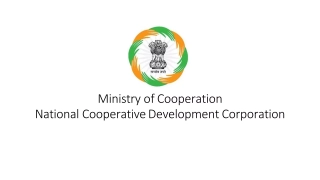

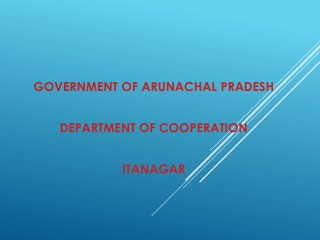
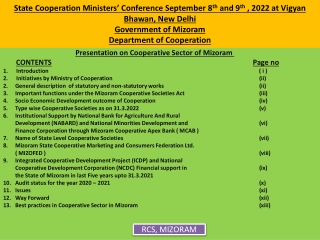
![❤[PDF]⚡ Civil War Talks: Further Reminiscences of George S. Bernard and His Fel](/thumb/20551/pdf-civil-war-talks-further-reminiscences-of-george-s-bernard-and-his-fel.jpg)
